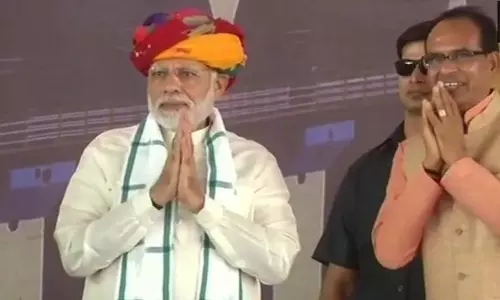
The warning signal from Aurangabad
text_fieldsThe communal clashes that led to the death of two persons in Aurangabad, Maharashtra last week is a clear indicator of the grave situation the nation is passing through.
The clashes which claimed the lives of two ordinary people in Aurangabad, including a teenager and a shopkeeper who makes his livelihood through his small business, are a dangerous warning of the fact that the country has been moulded into such a state that even a trivial reason could cause a flare up anytime anywhere. The reported reason for the clashes is that Aurangabad Municipal Corporation, is governed by the Shiv Sena-BJP alliance, cut off the water connection to a masjid as part of their crackdown on illegal water connections. While the water connection to the masjid was cut off, the shrine of another community was exempted from such action. When the arguments related to the issue led to clashes, two people were killed and about forty people including policemen were injured. Added to that is the damage to the property including the torching of over hundreds of shops and vehicles. It is the stern intervention of the police force which woke up late from their slumber that brought the situation under control.
At the same time, the authorities are still concerned that things could spin out of control anytime. Although the quarrel in the name of water was the immediate trigger of the clashes the other day, circumstances for communal divide have already been existing in the area. Programs were held in Aurangabad to protest the clashes that followed the violence against the Dalit community in Koregaon in January. There were shades of caste and community sentiments in the skirmishes over the dumping of waste in Padhegaon in February as well. It must be said that there was not any sufficient vigilance on the part of Devendra Fadnavis government in the state in handling these issues.
It was amidst the clashes fuming up thus due to several reasons that a section made attempts to destroy the border wall of the Waqf land in Aurangabad area worth crores of money by claiming rights over the plot. Another section came forward with a demand to completely remove the fruit and vegetable sellers in the streets during Ramadan which is due in a few days. Amidst this controversy, a trader’s hand-cart was shoved and his grocery destroyed. Thus it was after the communal divide prepared the breeding ground for all possibilities for clashes that reports of cutting off water to the masjid surfaced. A section of the people on social media took over the matter and joined in the provocation. The unrest that began with protest rallies and stone pelting did not take much time to get inflamed into riot. Even as the area is returning to normal, the population is in constant fear that a new clash may erupt. This is not the case with Aurangabad alone. There is room for anxiety that communal polarization is gaining strength equally in various parts of the country. Instead of softening issues and mitigating atmosphere of confrontation, on one hand there are efforts to make people fight against each other by spreading rumours and fake stories through social media. On the other are the police and authorities who, instead of spotting and stopping them, aid and abet culprits. Add to this the politicians who become advocates of hate instead of peace, everywhere we get all the factors necessary to make a country a maelstrom. Therefore, Aurangabad is ringing the hazard bell that absent sufficient caution, riot is at hand.
As in any other riot, this time again, after everything was over, police and government leadership claim to have known about the situation in time. But then it begs the question why no attempt was made to stop the encounters in time. The area had even earlier had the experience of social media sowing seeds of unrest. And on such occasions police used to take preventive action including disconnection of internet services. But this time apparently the authorities waited until the social media war between two sections in the matter of stoppage of water supply leading to eruption of clashes. And in Aurangabad too, as it happened during riots earlier, there was the spectacle of police becoming abettors of rioters. The pictures of ten policemen joining the arsonists when on Friday they put on fire shops run by Muslims are available with the authorities. It was during such attacks against shops that a gas cylinder burst causing the death of its owner. It was not the first time that police joining hands with the rioters were caught. Prior to this, in the riots of Mitmita, video footage of police pelting stones at houses of one section had been discovered. In spite of warnings about communal tendency among the police, the authorities failed in deploying impartial forces in the area.























